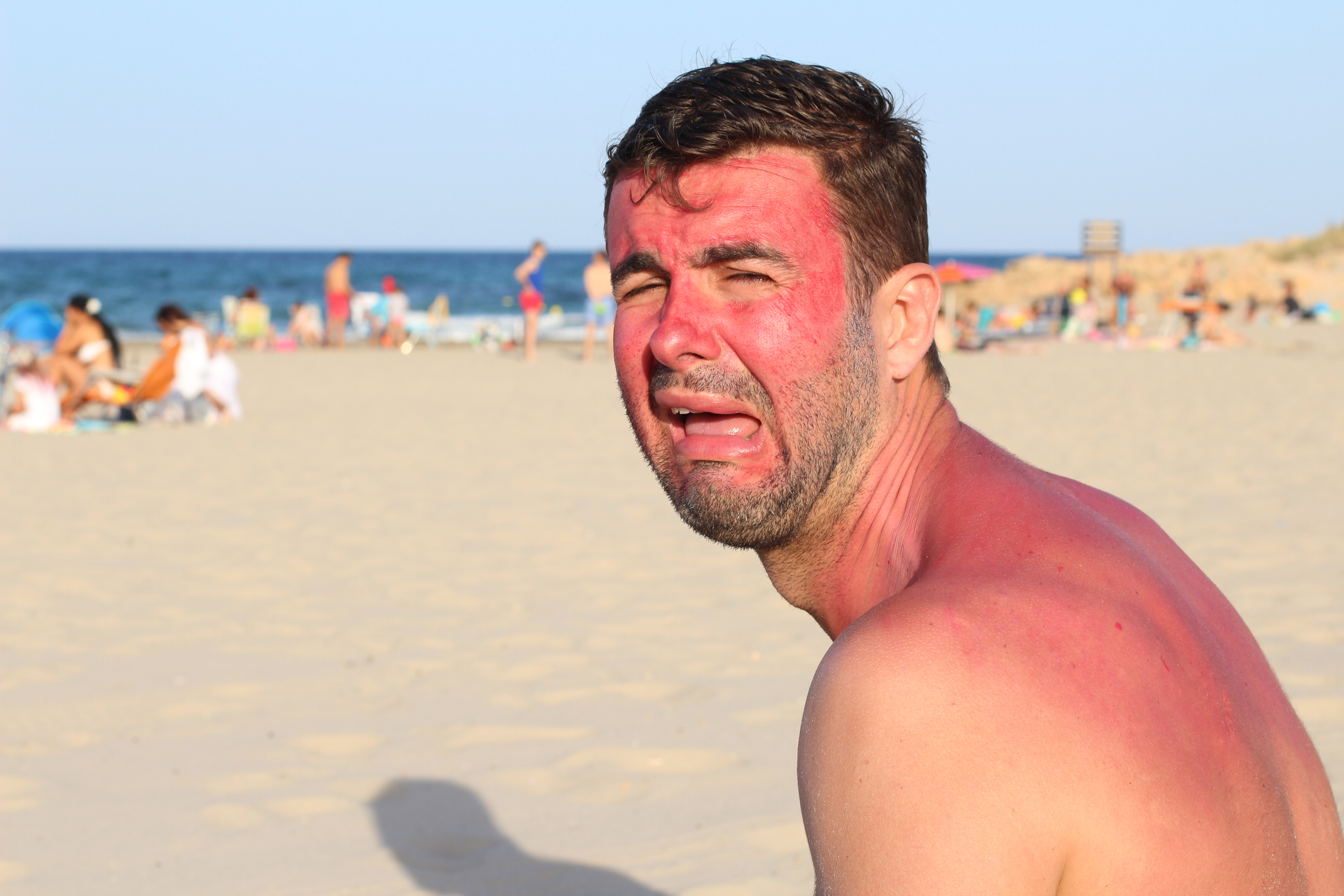Unfortunately, most Aussies know the feeling of sunburn all too well.
The red, painful skin that stings when you touch it. The blisters and peeling that can break out for days afterwards.
It’s so common that 2.4 million Aussies get burnt every weekend in summer.
Causing havoc in the skin
UWA Clinical Professor and Consultant Dermatologist Dr Prasad Kumarasinghe says that, when UV light falls on our skin, it causes a series of biochemical reactions.
These reactions can start within 30 minutes and affect the proteins, cell membrane and DNA in our cells, he says.
“That scenario creates havoc in the skin at a cellular level,” Prasad says.
“[The] excessive UVB exposure causes pain and redness in [people] with light-coloured skin.”
Prasad says the clinical manifestations take time to develop, with pain and redness usually peaking from several hours to 24 hours after sun exposure.
If the DNA changes are severe, the epidermal cells cannot survive, he says.
Those cells are later shed, causing sunburn’s characteristic peeling.
Why we slip, slop, slap, seek, slide
Prasad says there are also cells with substantial DNA damage that don’t die.
Usually, these very sick cells are destroyed by our immune system so they can’t proliferate.
But some damaged cells remain.
Prasad says intermittent, severe sunburn is really bad for our skin but doesn’t cause skin cancer straight away.
Instead, the damaged cells lie dormant, kept in check by our immunological defences.

“As we get older, our defence mechanisms get weaker,” Prasad says.
“Then, slowly, slowly … the cells that contain that badly affected DNA proliferate, overpowering the defence mechanisms, leading to cancers.”
These include basal cell carcinomas, squamous cell carcinomas and melanomas.
the sunscreen dilemma?
We need sunlight to help produce vitamin D in the body.
This vitamin helps keep our bones and teeth strong and healthy and is important for a healthy immune system.
Most people get enough vitamin D through incidental sun exposure, the Cancer Council says.
It says that, when the UV Index is 3 or above (such as during summer), you only need to spend a few minutes outdoors on most days of the week.
Many of us have balanced getting some time in the sun with a slathering of sunscreen to help save our cells. Sunscreen works by blocking and absorbing UV rays through a combination of physical and chemical particles.
But the chemicals in sunscreen. like oxybenzone, which rub into our skin, could be rubbing the environment the wrong way.
In fact, it’s estimated that 14,000 tonnes of sunscreen wash into the ocean each year.
Once in the ocean, the chemicals in sunscreen are absorbed by corals, disrupting their reproduction and growth cycles.
So what do we do? Depending on your skin type, you can use sunblock instead. Sunblock uses either zinc oxide or titanium oxide to create a physical barrier between your skin and the sun. These chemicals cannot be ingested by corals, making them a more ocean-friendly option.
You can also opt for sun-smart clothing and swimwear.

Treating the burn
If you do suffer from sunburn, get out of the sun and take a cool shower, Prasad says.
“You can even take a couple of showers during the next 24 hours,” he says.
“And use a good coating of a soothing moisturiser several times a day.”
If your sunburn is particularly bad, with large blisters, you should think about electrolyte balance too.
“Take plenty of water and rest,” Prasad says.
Large areas of painful sunburn may need a painkiller such as paracetamol or a mild topical steroid cream to reduce the inflammatory response.
Also watch for muscle pain, nausea, vomiting, headaches or muscle twitching.
“If you notice these symptoms, it is very severe and there may be dehydration and heat-induced metabolic mechanisms taking place,” Prasad says.
“In that case, you should see a doctor.”









